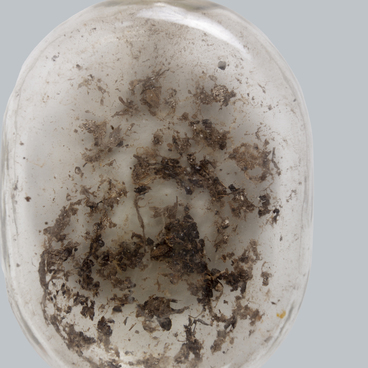During the Great Patriotic War, not a single major epidemic occurred in the Red Army. This was achieved through the efforts of medical reconnaissance — hygienists and epidemiologists. They ensured hygiene and epidemic control both in the army and among the civilian population.
On February 2, 1942, the People’s Commissariat of Public Health of the USSR issued a decree “On Measures to Prevent Epidemic Outbreaks Among the Population and in the Army”. It established special epidemic control commissions throughout the country. They were responsible for public health protection.
The sanitary intelligence service focused on improving the health of soldiers. It monitored food safety to prevent poisoning. The specialists paid great attention to ensuring a high-quality water supply. They chlorinated all wells in the liberated territories, took water samples, and performed their chemical analysis. These tasks resulted in the appearance of such sanitary kits which contained all the necessary supplies.
The sanitary scouts were also engaged in epidemic control efforts. Mass population migration, overcrowding, and unsanitary living conditions could cause epidemics. To prevent them, doctors made use of advanced medical science. Soviet citizens were vaccinated against typhoid fever and tetanus. Those who had come in contact with typhus fever patients were given the respective bacteriophage.
Laboratories were established to identify infection cases in a timely manner and send the sick to hospitals. Great importance was also given to personal decontamination. There were outbreaks in the territories occupied by the Nazis where about 70 percent of the population were infected with typhus fever.
The Nazis resorted to a deliberate release of biological agents and spread typhus fever in the death camps just before their liberation. The epidemic control service aimed to restore sanitary conditions and help the prisoners recover. Its efforts in clearing the corpses from battlefields and burying the dead soldiers also played an important role in improving the sanitary situation.
On February 2, 1942, the People’s Commissariat of Public Health of the USSR issued a decree “On Measures to Prevent Epidemic Outbreaks Among the Population and in the Army”. It established special epidemic control commissions throughout the country. They were responsible for public health protection.
The sanitary intelligence service focused on improving the health of soldiers. It monitored food safety to prevent poisoning. The specialists paid great attention to ensuring a high-quality water supply. They chlorinated all wells in the liberated territories, took water samples, and performed their chemical analysis. These tasks resulted in the appearance of such sanitary kits which contained all the necessary supplies.
The sanitary scouts were also engaged in epidemic control efforts. Mass population migration, overcrowding, and unsanitary living conditions could cause epidemics. To prevent them, doctors made use of advanced medical science. Soviet citizens were vaccinated against typhoid fever and tetanus. Those who had come in contact with typhus fever patients were given the respective bacteriophage.
Laboratories were established to identify infection cases in a timely manner and send the sick to hospitals. Great importance was also given to personal decontamination. There were outbreaks in the territories occupied by the Nazis where about 70 percent of the population were infected with typhus fever.
The Nazis resorted to a deliberate release of biological agents and spread typhus fever in the death camps just before their liberation. The epidemic control service aimed to restore sanitary conditions and help the prisoners recover. Its efforts in clearing the corpses from battlefields and burying the dead soldiers also played an important role in improving the sanitary situation.


